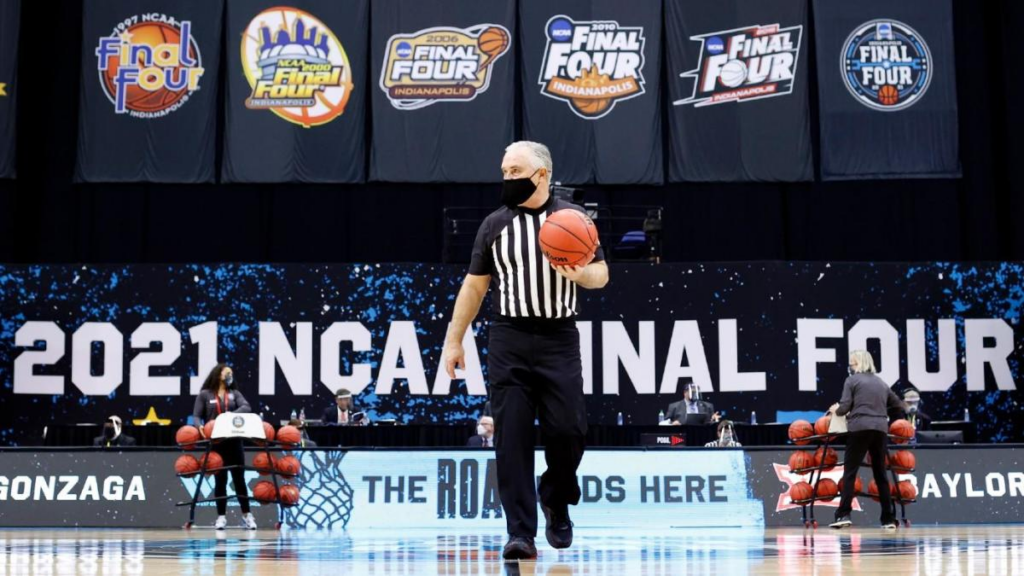
The biggest rule change in college basketball this season is the new shot clock. Some people think it will speed up the game, while others think it will make the game more difficult. What do you think.
The new rule change in college basketball
The new rule change in college basketball this season is designed to crack down on the number of fouls called. The rule is called the “foul out” rule, and it states that any player who commits six fouls in a game will be automatically ejected. This is a huge change from the previous rule, which allowed players to stay in the game even if they committed ten fouls.
The new rule has been met with mixed reactions from coaches, players and fans. Some people think that it will make the game more exciting, because there will be more scoring and less time spent on free throws. Others think that it will make the game less competitive, because star players will get ejected early and teams will be at a disadvantage.
There is no doubt that the new rule will have a big impact on college basketball this season. It remains to be seen whether it will be a positive or negative one.
How this rule change will affect the game
A new rule in college basketball will limit the number of fouls that a team can commit in a game to no more than 10. This rule change will have a significant impact on the way the game is played.In the past, teams could commit an unlimited number of fouls in a game. This often led to games where one team would intentionally foul the other team late in the game in order to stop the clock and get back into the game. This strategy is often referred to as “fouling out.”
The new rule change will limit the number of fouls that a team can commit, making it more difficult for teams to come back from large deficits. This will likely lead to more close games and less blowouts.It remains to be seen how this rule change will affect the outcome of games, but it is sure to have a big impact on the way college basketball is played.
How this rule change compares to other rule changes in college basketball
In an effort to reduce the number of fouls called in college basketball, the NCAA Men’s Basketball Rules Committee has implemented a rule change for the 2019-20 season. This rule change will allow officials to use discretion when calling fouls on players who are not in the act of shooting. Officials will also be instructed to let players play through contact that occurs away from the ball.
This is not the first time that the NCAA has made changes to the rules of college basketball in an attempt to reduce the number of fouls called. In 2015, the NCAA implemented a rule change that resulted in a significant decrease in the number of fouls called. However, this rule change did not have a lasting effect, as the number of fouls called increased again in subsequent years.The 2019-20 season will mark the first time that officials have been given discretion when calling fouls on players who are not shooting. It remains to be seen how thisrule change will impact the number of fouls called in college basketball.
The history of college basketball and rule changes
College basketball is a game that has undergone many rule changes throughout its history. One of the most significant changes came in 1938, when the number of fouls a player could commit before being disqualified from the game was increased from three to five. This change helped to open up the game and allowed for more scoring.
In recent years, there has been a push to further increase the number of fouls a player can commit before fouling out. Some have proposed increasing it to seven or even ten fouls. Others have suggested that each player should be allowed two “foul shots” instead of one for each foul committed
There is no easy answer when it comes to how many fouls should be allowed in college basketball. It is a difficult question that has been debated for many years, and there is no clear consensus on the best solution. The only thing that is certain is that the game will continue to evolve and change as time goes on.
The pros and cons of the new rule change
The 2019-20 college basketball season will be remembered for a lot of things. Unfortunately, one of those things will be the new rule change that allows coaches to challenge any call or non-call by the officials. The rule was put in place to try and help improve the officiating in the sport, but it has had some unintended consequences.
On the plus side, the new rule has led to more accurate calls being made. In theory, this should lead to a better product on the court and more fair outcomes. Additionally, coaches now have more accountability when it comes to their players’ actions on the court. If a player is fouling a lot, it’s now up to the coach to manage that and make sure they’re not putting their team at a disadvantage.
However, the new rule has also led to more games being decided by officiating reviews than by plays on the court. This has been a major source of frustration for fans and players alike. It also seems like there are more technical fouls being called than ever before. While this may be due in part to players and coaches adjusting to the new rules, it’s still something that needs to be addressed.
Overall, the new rule change in college basketball has had both positive and negative impacts. It remains to be seen how long it will stay in place, but for now, it’s something that everyone involved in the sport will just have to deal with.
How many fouls in college basketball
The biggest rule change in college basketball this season is that the personal foul limit for each player will be reset to zero at the start of each half. This means that players who commit four fouls in a half will not be allowed to play for the rest of that half, and will have to sit out the start of the second half as well.
While this may not seem like a big deal, it could have a major impact on how teams recruit. Because players who foul out of a game are not allowed to continue playing, teams will now be more hesitant to recruit players who are prone to fouling. This could lead to more players being redshirted (sitting out their first year of eligibility) in order to allow them to develop their game and avoid fouling out.
It will also be interesting to see how this rule change affects how teams play defense. With Fouling out becoming a more real possibility, teams may be more hesitant to use aggressive defensive strategies that could lead to easy fouls. This could lead to a decrease in scoring, as teams become more conservative on defense.
Ultimately, only time will tell how this rule change impacts college basketball. But it is definitely one worth watching, as it could have a major impact on the way the game is played and coached.
The future of college basketball
In July, the NCAA’s Playing Rules Oversight Panel approved a major change to how many fouls teams can commit in college basketball games. Starting in the 2020-2021 season, teams will be allowed to commit up to 10 fouls per half before being sent to the bonus. This is a dramatic increase from the current rule, which allows teams to commit up to six fouls per half before being sent to the bonus.
The change is intended to help reduce the number of “hack-a-shack” fouls that are committed late in games in an effort to stop the clock and extend the game. It is also hoped that the change will help reduce the number of injuries that occur when players are fouled hard in an attempt to stop them from scoring.
The new rule will have a major impact on how college basketball games are played and could lead to more scoring and less fouling overall. It will be interesting to see how coaches and players adjust to the new rule and whether it has the desired effect of making college basketball more enjoyable for fans.













